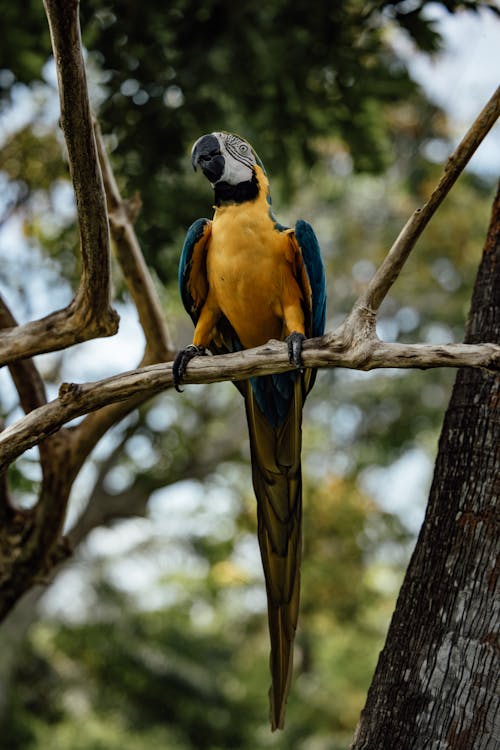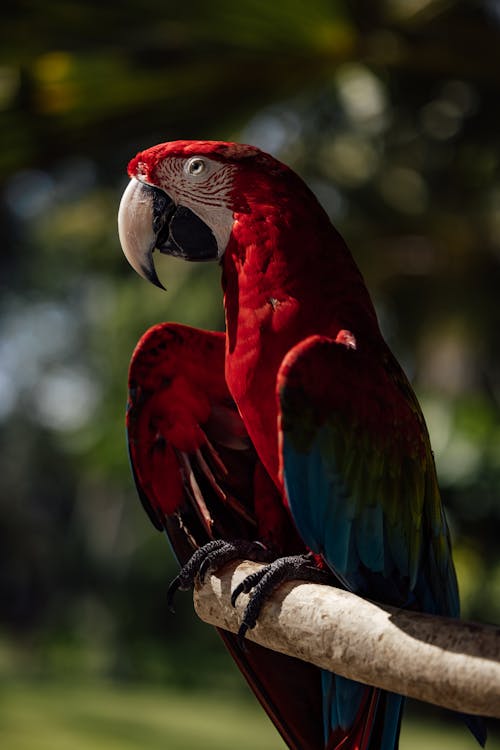The search segment of the zoology subfield known as ornithology is on the “methodological study and subsequent birds studies with all that relates to them”; they are the focus of the zoology subfield known as ornithology.
Ornithology differs from similar fields in a number of ways, in part because of how well-known and beautiful birds are.
While the main focus of early ornithology was on species descriptions and distributions, ornithologists nowadays focus on finding answers to very specific questions, frequently using birds as models to test ideas or hypotheses. The bird’s studies will bring results to this.
Also important about bird studies
The number of scientists who call themselves “ornithologists” has decreased as a result of the fact that the majority of contemporary biological theories apply to all forms of life. Ornithology employs a wide variety of instruments and methods, both in the field and in the lab, and new developments are frequently developed.
The majority of scientists that identify as “ornithologists” focus on certain fields, like anatomy, taxonomy, or ecology lifestyles and behaviors.
However, this is applicable to a wide range of biological practices. And all the bird communities of biological and evolutionary significance are here. The threatened birds
Etymology of birds studies
The late 16th-century Latin term ornithologia, which translates to “bird science” from the Greek words ornis (“bird”) and “o logos,” is where the name “ornithology” originates (“theory, science, thought”). And so are population ecology and conduct research.
History
Biological history and the histories of numerous other scientific fields, such as ecology, anatomy, physiology, paleontology, and more recently, molecular biology, are all heavily reflected in the history of ornithology.
Trends include the shift from merely describing phenomena to identifying patterns and, ultimately, explaining how these patterns are produced.
Early learning and research
The earliest evidence of human interest in birds may be seen in several stone-age drawings, which show that humans have been observing birds since prehistory.
Birds may have been a significant food source, as up to 80 different species’ bones have been discovered in early archeological investigations. Bird-related words are prevalent in the vocabularies of many different cultures.
Traditional bird names frequently reflect a thorough understanding of the behavior of the species, with many names being.
Early written records offer important insights into the historical ranges of certain species. For instance, Xenophon mentions the ostrich’s profusion in Assyria (Anabasis, i. 5); nevertheless, all living ostrich races are now restricted to Africa, and the subspecies from Asia Minor is now extinct.
Other ancient works, including the Vedas (c. 1500–800 BC), show the thorough monitoring of avian life cycles and contain the oldest mention of the Asian koel’s brood parasitism habit. Similar to language, early works of art from China, Japan, Persia, and India also show knowledge with examples of scientifically correct bird depictions. And so are the migratory birds and wild birds.

Historia Animalium
Historia Animalium, written in 350 BC, Aristotle described the practice ofThe oldest mention of falconry dates to Sargon II’s rule in Assyria (722–705 BC). After the Hun and Alan invasions, it is believed that only after the year 400 did falconry arrive in Europe from the east. Numerous Arabic works on the topic and general ornithology were written beginning in the eighth century, along with translations of the writings of classical authors originally written in Greek and Syriac.
The aid of Jewish and Muslim scholars
With the aid of Jewish and Muslim scholars, particularly in Toledo, which had passed into Christian hands in 1085 and whose libraries had survived the destruction of the city’s libraries, the great works of Arabic and Greek scholars were translated into Latin for the first time during the 12th and 13th centuries after crusades and conquest had subjugated Islamic territories in southern Italy, central Spain, and the Levant under European rule.
Around 1215, a Scottish man named Michael Scotus translated Aristotle’s Animalia from Arabic into Latin. This was the first time in a millennium that Europeans had access to this essential treatise on zoology. In Sicily’s Norman court, falconry was a favourite pastime, and Palermo produced a number of works on the subject. This is the main source of knowing bird species and bird conservation international.
How the Arabic works were translated
Theodore of Antioch from Syria translated the well-known Arabic work known as the by an unknown author into Latin in 1240–1241 as the Liber Moaminus under the patronage of Emperor Frederick II of Hohenstaufen (1194–1250), who later built up a menagerie and sponsored translations of Arabic texts, among them the Liber Moaminus.Early German and French researchers collected preexisting texts and carried out original bird research.
These included Pierre Belon, who talked about the fish and birds he had seen in France and the Levant, and Guillaume Rondelet, who discussed his observations in the Mediterranean.
A folio volume from 1555 called Belon’s Book of Birds contains descriptions of about 200 species. His study of the human and bird skeletons is regarded as a turning point in comparative anatomy.
Bird conservation
The internal anatomy of birds was carefully studied by Dutch anatomist Volcher Coiter (1534–1566), who also created a categorization of birds called De Differentiis Avium (about 1572), which was based on structure and behaviour. Around 1557, Konrad Gesner penned the Vogelbuch and Icones avium omnium.
Ulisse Aldrovandi, an encyclopedic naturalist, started a 14-volume natural history, ornithologiae quod est de avibus historiae libri XII, which was published from 1599 to 1603 with three volumes on birds. This is similar to how Gesner did with bird ecology and animal behaviour.
Aldrovandi had a keen interest in both plants and animals, and his 363-volume body of work included 3000 drawings of fruits, flowers, plants, and animals. His Ornithology alone is 2000 pages long and includes information on chicken and poultry methods, among other topics.
To categorize bird groups, he employed a variety of features, including behavior, particularly bathing, dusting and bird eggs, bird biology.

Research studies
The two-volume Natural History of Carolina, Florida, and the Bahama Islands by Mark Catesby, a seminal work that featured 220 hand-painted engravings and served as the inspiration for many of the species Carl Linnaeus documented in 1758, marked the beginning of ornithology as a scientific field. By designating a Systema Naturae for each species, Linnaeus’ work revolutionized the taxonomy of birds and bird populations.
The vastness of the areas that Britain controlled or had influence over throughout the 19th century and for a while afterward undoubtedly contributed to the obsession with ornithology that has a broad geographic scope.
Victorian bird collectors noted local specialization and variation in widely distributed species as they noticed variations in bird shapes and habits across geographic regions. With contributions from all across the world, museums’ and private collectors’ collections developed.
The primary task of museum specialists evolved into the naming of species with binomials and the grouping of birds into families based on their similarities. Trinomial names were created as a result of the variances in widely distributed birds across geographical regions.